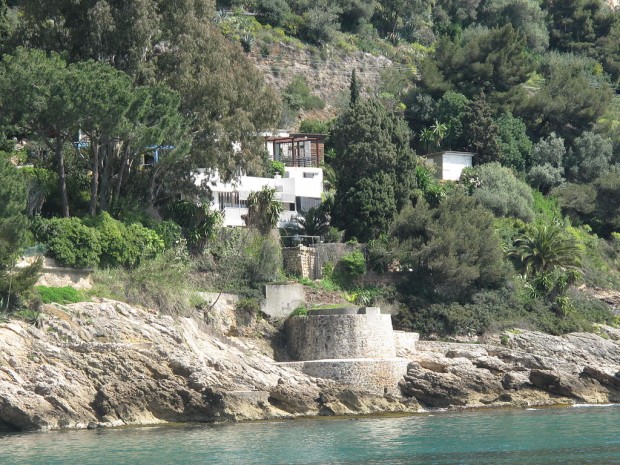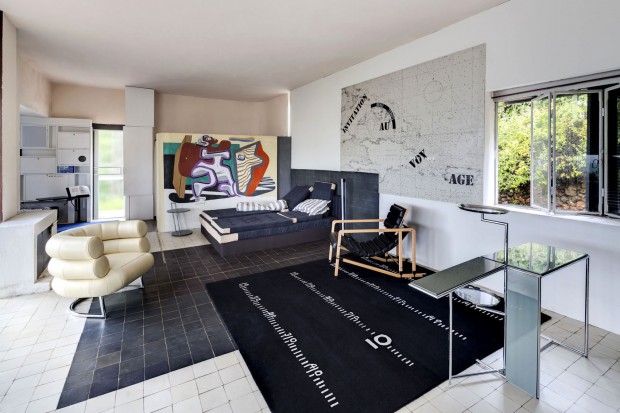Eileen Gray’s colorful story is in sharp contrast to the stark white villa (e.1027) that she designed as her getaway from Paris. Gray was born into an aristocratic Irish family 1878. Always interested in art, Gray initially went to school for painting and was the 1st female admitted into the prestigious Slade school. Wishing to try out something new, Gray took up an apprenticeship in a lacquer workshop, quite unusual for a female in those early days. Moving to Paris in 1902, she eventually opened her own gallery in 1922. Relatively poor attendance at the gallery prompted Gray to shift gears to architecture. To this day, Gray is known as one of the most important architects and designers of the 20th century.
Wishing to find solace away from Paris, Gray and her partner, Jean Badovici, began designing their summer home in 1926. Built in 1929 on an isolated stretch of the French Riviera with a beautiful view of the ocean, Gray now had her vacation hideaway! The villa’s name was a code of intertwined initials… e for Eileen, 10 for Jean (j being the 10th letter in the alphabet) and both 2 and 7 are the initials of other lovers that passed through their lives during that time. In essence, It’s important to note that Gray was the one responsible for this design and construction of e.1027 therefore cementing her place as one of Modernism’s chief architects.
When the couple separated, Gray left the house to Badovici. Sadly, after Badovici’s death in 1956, the house fell into demise. After 16 years of renovations (partially paid for and initiated by the state of France), e.1027 was opened to the public in 2015. While there are claims that the renovation wasn’t performed “up to par”, the villa is now honored as a historical landmark and enables visitors to get a good feel for Gray’s style and imagination at a time where this aesthetic was quite revolutionary.

Situated privately on the rocky hillside at Cap-Martin on the Cote d’Azur.
Image courtesy of: Wikipedia

The restored living room of Eileen Gray with her furniture designs and tapestry. On the wall is one of the nine murals Le Corbusier painted without Gray’s permission.
Image courtesy of: ArchDaily, photographed by: Manuel Bougot